Do you have a question about the Orion Observer 80ST and is the answer not in the manual?
Detailed list of all components included with the Orion Observer 80ST EQ telescope, with quantities.
Instructions for attaching the three aluminum tripod legs and mounting platform.
Securing the accessory tray and installing the equatorial mount onto the tripod.
Attaching the counterweight shaft and connecting slow-motion control cables.
Mounting the telescope optical tube and attaching the red dot finder scope.
Inserting the star diagonal and eyepiece into the telescope's focuser.
Daytime procedure to align the red dot finder scope with the main telescope.
Balancing the telescope on the R.A. axis to ensure fluid movement during use.
Aligning the mount's R.A. axis parallel to Earth's rotational axis for celestial tracking.
Calibrating and using setting circles to locate celestial objects by coordinates.
Selecting a site with good seeing, transparency, and minimal light pollution.
Guidance on choosing eyepieces and calculating magnification for different views.
Techniques for achieving sharp focus and observing planets, stars, and deep-sky objects.
Guidance on observing the Moon, planets, stars, and deep-sky objects.
Enhancing viewing with a Moon filter and enabling tracking with a motor drive.
Increasing magnification with a Barlow lens and aiding navigation with star charts.
Guidelines for storing, protecting, and handling the telescope to ensure longevity.
Safe and effective methods for cleaning lenses and eyepieces to maintain clarity.
Detailed specifications including aperture, focal length, mount type, and weight.
Detailed list of all components included with the Orion Observer 80ST EQ telescope, with quantities.
Instructions for attaching the three aluminum tripod legs and mounting platform.
Securing the accessory tray and installing the equatorial mount onto the tripod.
Attaching the counterweight shaft and connecting slow-motion control cables.
Mounting the telescope optical tube and attaching the red dot finder scope.
Inserting the star diagonal and eyepiece into the telescope's focuser.
Daytime procedure to align the red dot finder scope with the main telescope.
Balancing the telescope on the R.A. axis to ensure fluid movement during use.
Aligning the mount's R.A. axis parallel to Earth's rotational axis for celestial tracking.
Calibrating and using setting circles to locate celestial objects by coordinates.
Selecting a site with good seeing, transparency, and minimal light pollution.
Guidance on choosing eyepieces and calculating magnification for different views.
Techniques for achieving sharp focus and observing planets, stars, and deep-sky objects.
Guidance on observing the Moon, planets, stars, and deep-sky objects.
Enhancing viewing with a Moon filter and enabling tracking with a motor drive.
Increasing magnification with a Barlow lens and aiding navigation with star charts.
Guidelines for storing, protecting, and handling the telescope to ensure longevity.
Safe and effective methods for cleaning lenses and eyepieces to maintain clarity.
Detailed specifications including aperture, focal length, mount type, and weight.
| Type | Refractor |
|---|---|
| Aperture | 80 mm |
| Focal Length | 400 mm |
| Focal Ratio | f/5 |
| Mount Type | Altazimuth |
| Highest Useful Magnification | 160x |
| Lowest Useful Magnification | 11x |
| Resolution (Rayleigh Criterion) | 1.74 arcseconds |
| Resolution (Dawes' Limit) | 1.45 arcseconds |
| Light Gathering Power | 131x |
| Optical Design | Refractor |
| Eyepieces | 10mm (40x) |
| Limiting Stellar Magnitude | 12.0 |
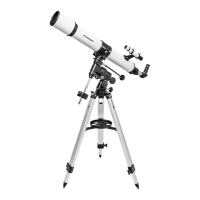
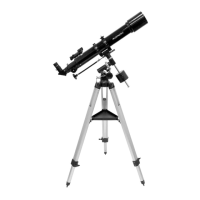
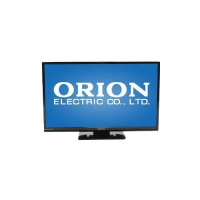
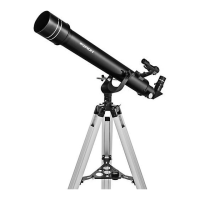
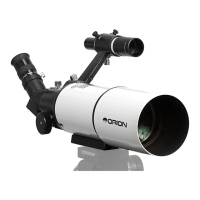
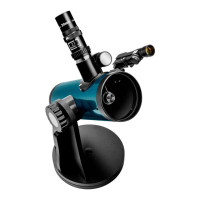
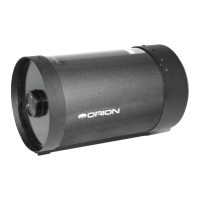

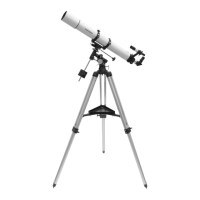
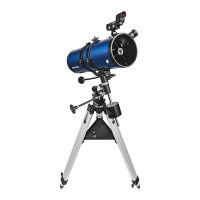
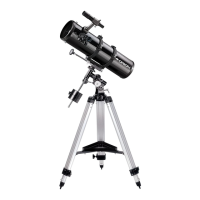
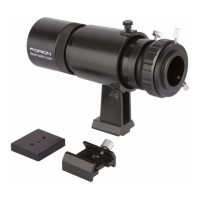
